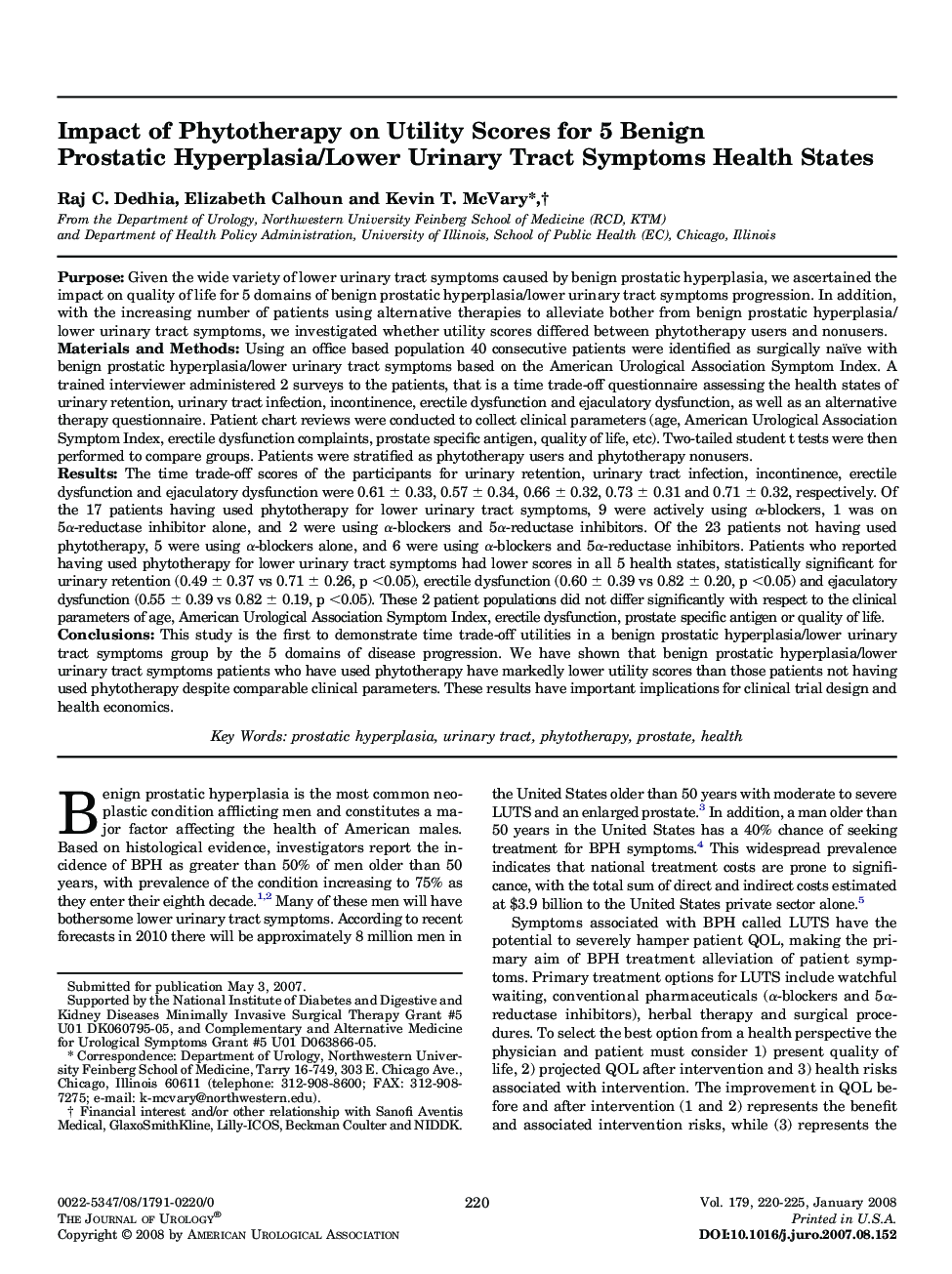| کد مقاله | کد نشریه | سال انتشار | مقاله انگلیسی | نسخه تمام متن |
|---|---|---|---|---|
| 3874971 | 1598999 | 2008 | 6 صفحه PDF | دانلود رایگان |

PurposeGiven the wide variety of lower urinary tract symptoms caused by benign prostatic hyperplasia, we ascertained the impact on quality of life for 5 domains of benign prostatic hyperplasia/lower urinary tract symptoms progression. In addition, with the increasing number of patients using alternative therapies to alleviate bother from benign prostatic hyperplasia/lower urinary tract symptoms, we investigated whether utility scores differed between phytotherapy users and nonusers.Materials and MethodsUsing an office based population 40 consecutive patients were identified as surgically naïve with benign prostatic hyperplasia/lower urinary tract symptoms based on the American Urological Association Symptom Index. A trained interviewer administered 2 surveys to the patients, that is a time trade-off questionnaire assessing the health states of urinary retention, urinary tract infection, incontinence, erectile dysfunction and ejaculatory dysfunction, as well as an alternative therapy questionnaire. Patient chart reviews were conducted to collect clinical parameters (age, American Urological Association Symptom Index, erectile dysfunction complaints, prostate specific antigen, quality of life, etc). Two-tailed student t tests were then performed to compare groups. Patients were stratified as phytotherapy users and phytotherapy nonusers.ResultsThe time trade-off scores of the participants for urinary retention, urinary tract infection, incontinence, erectile dysfunction and ejaculatory dysfunction were 0.61 ± 0.33, 0.57 ± 0.34, 0.66 ± 0.32, 0.73 ± 0.31 and 0.71 ± 0.32, respectively. Of the 17 patients having used phytotherapy for lower urinary tract symptoms, 9 were actively using α-blockers, 1 was on 5α-reductase inhibitor alone, and 2 were using α-blockers and 5α-reductase inhibitors. Of the 23 patients not having used phytotherapy, 5 were using α-blockers alone, and 6 were using α-blockers and 5α-reductase inhibitors. Patients who reported having used phytotherapy for lower urinary tract symptoms had lower scores in all 5 health states, statistically significant for urinary retention (0.49 ± 0.37 vs 0.71 ± 0.26, p <0.05), erectile dysfunction (0.60 ± 0.39 vs 0.82 ± 0.20, p <0.05) and ejaculatory dysfunction (0.55 ± 0.39 vs 0.82 ± 0.19, p <0.05). These 2 patient populations did not differ significantly with respect to the clinical parameters of age, American Urological Association Symptom Index, erectile dysfunction, prostate specific antigen or quality of life.ConclusionsThis study is the first to demonstrate time trade-off utilities in a benign prostatic hyperplasia/lower urinary tract symptoms group by the 5 domains of disease progression. We have shown that benign prostatic hyperplasia/lower urinary tract symptoms patients who have used phytotherapy have markedly lower utility scores than those patients not having used phytotherapy despite comparable clinical parameters. These results have important implications for clinical trial design and health economics.
Journal: The Journal of Urology - Volume 179, Issue 1, January 2008, Pages 220–225